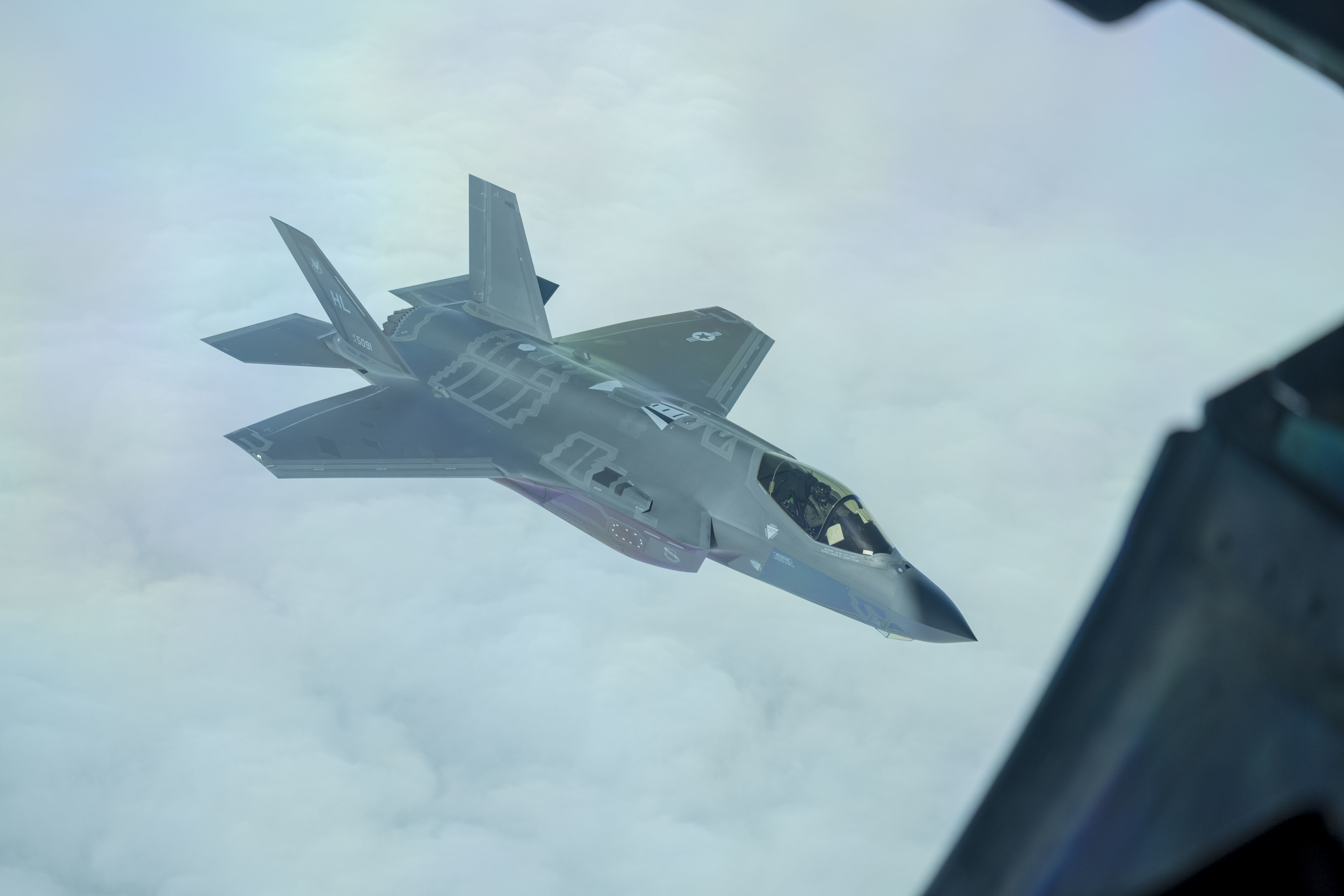
An F-35A Lightning II assigned to Hill AFB, Utah, about to be refueled by a KC-10 Extender, April 6, 2018. USAF photo by SSgt. Michael Ki Hong.
The F-35 program expects to hit a major milestone in its development this week, conducting the final flight in its system development demonstration test—wrapping up flights in a test program that included 70,000 test points and 9,000 flight hours.
Joint Program Office Executive Vice Adm. Mat Winter, speaking at the Navy League’s Sea Air Space expo in National Harbor, Md., said the milestone comes at a time when the program is moving forward on negotiations for the next production lot contracts and as the contractors on the program are working to dramatically reduce production and sustainment costs.
?“This is real, folks,” Winter said. “There are 280 aircraft out there operational, and ready to go to war. We own the fight.”
The program office is “getting close” to closing out the deal for low-rate initial production Lot 11. It has also fielded proposals from Lockheed Martin and Pratt & Whitney on Lots 12, 13, and 14. The JPO is going into these negotiations with a focus on driving the “cost out of production,” Winter said. Under the previous contract award, the Air Force’s F-35A variant fell below $100 million per airplane. By Lots 14 and 15, all three variants will be under the $100 million mark.
To meet this mark, Lockheed and other contractors need to ramp up their production lines from between seven and nine F-35s per month to between 12 and 15 per month.
“It’s a challenge, we’re not there yet,” Winter said.
The program also faces challenges in sustainment costs, which Winter has previously said are unsustainable. Early production aircraft are also available at a low rate—Lot 2 through 4 aircraft have an availability rate of between 40 and 50 percent, while later jets from Lots 9 and 10 are available between 70 and 75 percent. To address this, the JPO is looking to build its repair capacity by standing up depots and addressing a shortfall of spare parts that have hamstrung the fleet.
The F-35s Autonomic Logistics Information System, or ALIS, has been plagued with issues, including false positives identifying maintenance issues that are not there., but updated software should help address this, Winter said.
Winter also addressed a recent congressionally mandated report, which stated that eventually each service will takecharge of its own F-35 variant instead of having a single Joint Program Office.
Winter pushed back on the suggestion that this report calls for a change to the current system. There are already representatives from each service ensuring “that we support the service’s focus on long-term efficiencies” for their aircraft. There are “several forums” that already exist to ensure the JPO is engaged with the services. “Every weapons system at some point has changed,” Winter said, and that will eventually happen with the F-35 as production eventually tails off. The program office will continue to mature and “will be assessed every year,” he said.
